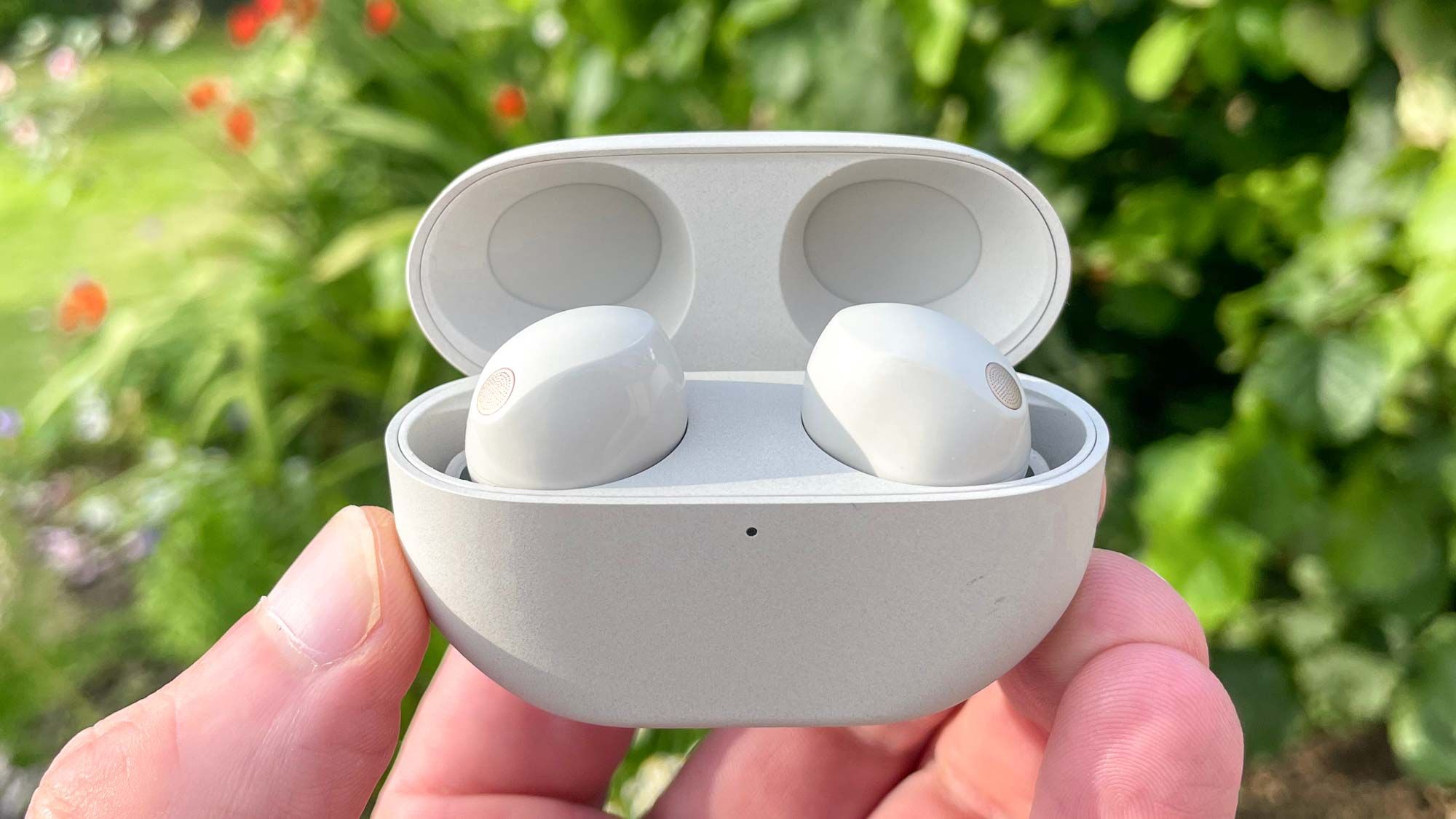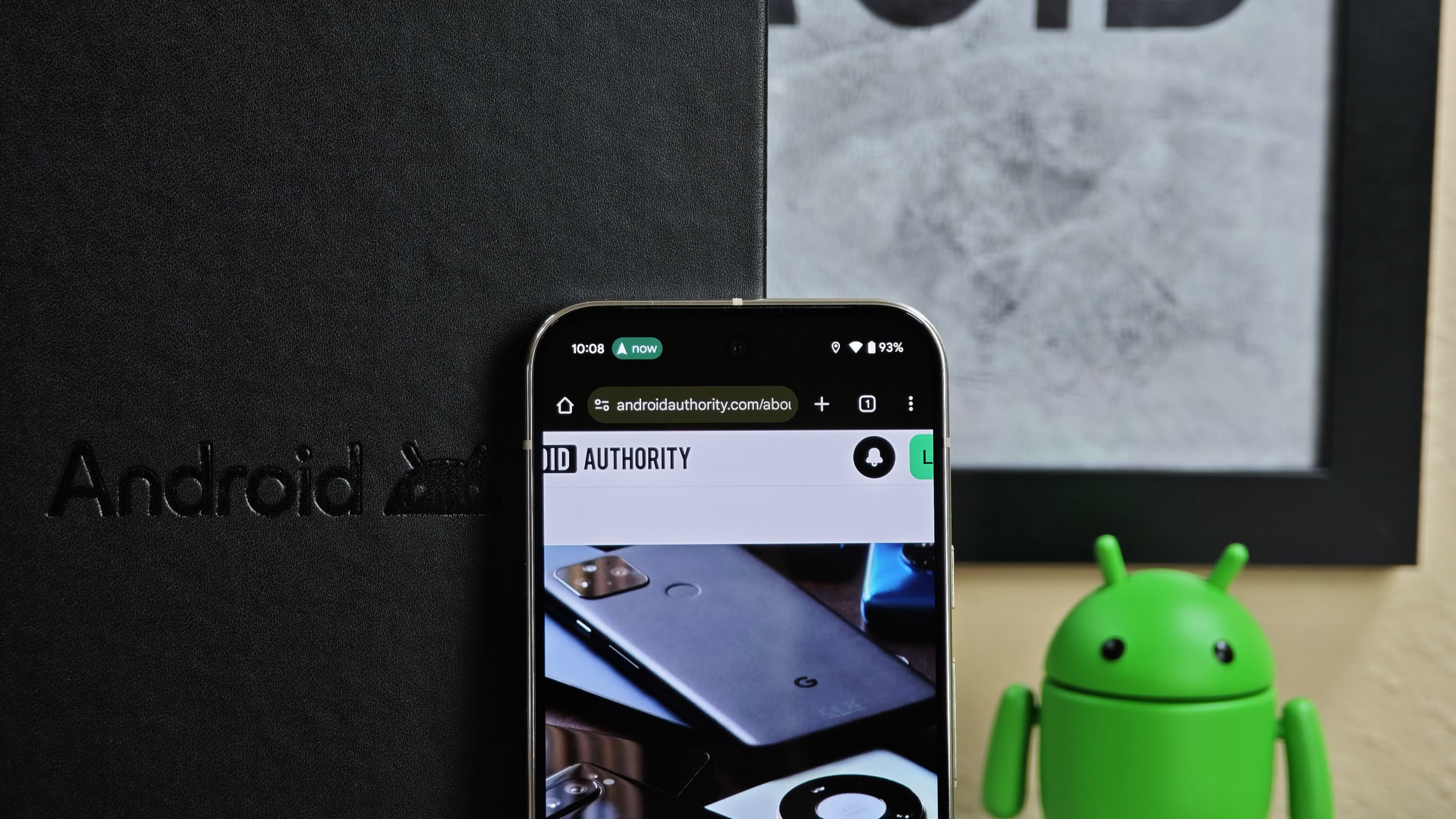When it comes to TVs these days, 65 inches isn’t considered nearly as large as it once was. And, since 75-inch TVs have dropped in price over the last few years, a huge screen is now within reach of almost every budget. I’ve been reviewing TVs for more than 10 years. As a certified TV calibrator, I use specialized equipment to measure each TV’s brightness, contrast, color accuracy, color range, and latency for gaming. The LG Evo C5 is our top overall OLED pick with excellent performance and loads of features, and you can regularly find it for well below its retail price. On the less expensive side, the Hisense U65QF is a fantastic budget TV with models in the massive (85 and 100 inches) size range. Beyond those models, this list has a range of excellent big-screen TVs for all budgets, so read on for more top picks.
Deeper Dive: Our Top Tested Picks
EDITORS’ NOTE
November 5, 2025: With this update, we added the LG Evo C5. Our remaining picks have been vetted for currency and availability. Since our last update, we reviewed and evaluated one new TV for potential inclusion in this roundup and our other home entertainment roundups. We currently have three TVs from LG, Panasonic, and TCL for evaluation.
- Affordable
- Bright, colorful picture
- 144Hz with AMD FreeSync Premium Pro
- Apple AirPlay
- Some light bloom
- No hands-free voice control
Hisense’s U65QF is our top budget TV of the year so far, with a picture that swings well above its class. It’s the rare cheap TV that can push 1,000 nits of peak brightness, a threshold usually reserved for midrange and higher-end models, and it has wide, accurate colors to match. It lacks a few niceties like hands-free voice control, but for the price, it’s an incredible deal.
Budget shoppers: At $1,200 or less for 85 inches, the U65QF is one of the cheapest big-screen TVs you can get. If you’re looking for the largest possible TV at the lowest possible price while still getting a good viewing experience, this is it.
Privacy-minded Amazon fans: If you’re an avid Amazon user who wants to control your home using Alexa but don’t want a device constantly listening to you, the U65QF is a good choice. It runs on the Fire TV platform with Alexa built in, letting you control it with your voice by pressing the microphone button on the remote and speaking into it. It doesn’t have a far-field microphone, so you need to be holding the remote, but that means it isn’t always keeping an ear out.
Panel Type
LED
Screen Size
85 inches
Resolution
3,840 by 2,160
Video Inputs
HDMI, Composite, RF, USB
HDR
Dolby Vision, HDR-10
HDMI Ports
4
Streaming Services
Yes
Screen Brightness
1024 nits
Refresh Rate
144 Hz
Input Lag (1080p120)
4.6 ms
Input Lag (4K60)
13.1 ms
AMD FreeSync
FreeSync Premium Pro
Nvidia G-Sync
None
Learn More
Hisense 85U65QF Review
- Vivid, accurate colors
- Excellent contrast and detail
- Sleek design
- WebOS with Apple AirPlay, Google Cast, and hands-free Alexa
- Not the brightest OLED
- No ATSC 3.0
While it isn’t the brightest or most cutting-edge OLED TV, the LG Evo C5 is one of our favorites for its value. It offers a fantastic picture, a sleek design, and plenty of features, including Apple AirPlay, Google Cast, and hands-free Amazon Alexa, and it’s consistently available for far below its suggested retail price. The 77-inch model’s MSRP might be $3,699.99, but we haven’t seen it cost more than $2,000 since July.
Value-conscious home theater fans: An OLED TV is your best bet if you want a great picture on a slim screen, and the Evo C5 offers just that for much less than most other OLEDs out there. It’s an excellent all-around value as a home theater centerpiece.
OLED-curious TV watchers: If you’ve been considering switching from LED to OLED but have been holding off due to the price, the Evo C5 is just what you’ve been waiting for. It doesn’t cost too much more than a mid-to-high-end LED TV, and that modest premium is justified by its style and performance.
Panel Type
OLED
Screen Size
77 inches
Resolution
3,840 by 2,160
Video Inputs
HDMI, RF, USB
HDR
Dolby Vision, HDR10
HDMI Ports
4
Streaming Services
Yes
Screen Brightness
944 nits
Refresh Rate
120 Hz
Input Lag (1080p120)
4.5 ms
Input Lag (4K60)
12.9 ms
AMD FreeSync
FreeSync
Nvidia G-Sync
G-Sync Compatible
Learn More
LG Evo C5 OLED TV (77-Inch) Review
- Incredibly bright
- Wide, accurate colors
- 165Hz VRR with AMD FreeSync Premium and Nvidia G-Sync
- Sleek design
The LG Evo G5 is simply the best-looking OLED we’ve seen yet and by far the brightest. Its colors are wide and accurate, too, and it’s packed with gaming features. Its incredible performance helps justify its high price.
Home theater enthusiasts: If you’re looking for the best picture possible for your home theater, the Evo G5 should be high on your list. It’s bright, colorful, and offers the per-pixel light control that makes OLED technology so appealing. It’s a premium TV for a premium living room setup.
Wall-mounted TV watchers: The Evo G5 is primarily designed to be mounted on a wall, and comes with its own nearly flush wall mount. If you have the bare wall space for it, it’s one of the best-looking TVs you can install there. However, it doesn’t include a table stand, so keep that in mind if you do want to put it on a flat surface.
Panel Type
OLED
Screen Size
77 inches
Resolution
3,840 by 2,160
Video Inputs
HDMI, USB, RF
HDR
Dolby Vision, HDR-10
HDMI Ports
4
Streaming Services
Yes
Screen Brightness
1608 nits
Refresh Rate
120 Hz
Input Lag (1080p120)
12.9 ms
AMD FreeSync
FreeSync Premium
Learn More
LG Evo G5 OLED TV (77-Inch) Review
- Incredibly bright picture
- Deep blacks
- Wide, accurate colors
- 4.1.2-channel spatial audio system
- 165Hz VRR with AMD FreeSync Premium Pro
- Apple AirPlay and Google Cast
- Side-mounted USB-C port that supports DisplayPort video
- Only three HDMI ports
- Slight light bloom
- More expensive than its predecessor
It’s a bit more expensive than its predecessor, the U8N, but Hisense’s U8QG still leads the pack in overall value with its incredibly bright picture, wide and accurate colors, 4.1.2-channel built-in spatial audio sound system, 165Hz refresh rate with VRR and AMD FreeSync Premium Pro, and its very rare DisplayPort-over-USB-C input. It’s also brighter than the already nearly blinding U8N, all for a reasonable price. It has just one ding to it besides the higher price: Only three HDMI ports.
Value shoppers: This is simply a great overall value for anyone looking to get a strong picture and lots of features without spending too much, even if it’s pricier than the previous generation. It’s even available in a massive 100-inch version.
Audio-focused home theater fans: The 4.1.2-channel speaker system built into the U8QG can produce a big, detailed sound field with plenty of directionality in front of you, both to the sides and vertically with height channels. If you want a spatial audio experience without buying a separate soundbar, this is an excellent pick. It won’t make you think there are speakers behind the couch, but it’ll otherwise offer much more immersive audio than most TVs.
Panel Type
LED
Screen Size
85 inches
Resolution
3,840 by 2,160
Video Inputs
HDMI, USB, RF
HDR
Dolby Vision, HDR-10
HDMI Ports
3
Streaming Services
Yes
Screen Brightness
3200 nits
Refresh Rate
165 Hz
Input Lag (1080p120)
4.3 ms
Input Lag (4K60)
10.1 ms
AMD FreeSync
FreeSync Premium Pro
Nvidia G-Sync
None
Learn More
Hisense 85U8QG (85-Inch) Review
- Bright, colorful picture
- Simple, easy-to-use interface
- Hands-free voice control
- Remote finder
- No full voice assistant
- Lacks ATSC 3.0
Roku is one of our favorite smart TV platforms to recommend for less tech-savvy users. It’s friendly, simple, and not bogged down with many non-TV features like other platforms can be. For a big TV that uses Roku without a separate Roku media streamer, the company’s own Pro Series is the best pick. Its picture looks great, you can search for content and control it with your voice hands-free, and it even has a handy remote finder button.
Casual TV viewers: If you don’t want your TV to function as a smart home hub with a full voice assistant, and simply want to watch what you want without any extra features, this is the TV to get.
Less tech-savvy users: Because the Roku interface is so simple and accessible, it’s one of the easiest ways to get into streaming if you aren’t very good with tech. It’s built around big buttons that put you into whatever service you want, without a lot of extraneous functions or loads of suggestions and ads.
Anyone who regularly loses the remote: The remote finder feature on the Roku Pro Series is vital if you find yourself constantly looking for the TV remote. Press the button on the TV itself, and you’ll be able to hear the remote chime from wherever it’s wedged in the couch.
Panel Type
LED
Screen Size
75 inches
Resolution
3,840 by 2,160
Video Inputs
HDMI, RF, USB
HDR
Dolby Vision, HDR-10
HDMI Ports
4
Streaming Services
Yes
Screen Brightness
1941 nits
Refresh Rate
120 Hz
Input Lag (1080p120)
5.2 ms
Input Lag (4K60)
9.4 ms
AMD FreeSync
FreeSync Premium Pro
Nvidia G-Sync
None
Learn More
Roku 75-Inch Pro Series (2025) Review
- Bright picture with balanced color and strong contrast
- Hands-free Alexa integration
- Supports Apple AirPlay 2
- 120Hz with VRR and AMD FreeSync Premium Pro
- Color gamut isn’t as wide as competitors
- Can suffer from light bloom
The Fire TV Omni Mini-LED is Amazon’s best Fire TV television by far, mainly because it’s much, much brighter than any of its predecessors. It’s loaded with features, including hands-free Alexa, Apple AirPlay, and 144Hz VRR with AMD FreeSync Premium Pro. And at $2,100 for 85 inches, it’s reasonably priced.
Dedicated Alexa users: Thanks to its far-field microphone array and hands-free voice control, the Fire TV Omni Mini-LED is the best big screen for anyone who uses Alexa and has built their smart home around the voice assistant. And, unlike cheaper Fire TV Omni models, it has a terrific picture.
Panel Type
LED
Screen Size
85 inches
Resolution
3,840 by 2,160
Video Inputs
HDMI, RF, USB
HDR
Dolby Vision, HDR-10
HDMI Ports
4
Streaming Services
Yes
Screen Brightness
1623 nits
Refresh Rate
120 Hz
Input Lag (1080p120)
6.4 ms
AMD FreeSync
FreeSync Premium Pro
Nvidia G-Sync
None
Learn More
Amazon Fire TV Omni Mini-LED (85-Inch) Review
- Very bright OLED panel
- Excellent color performance
- 4.2.2-channel speaker system
- One Connect Box aids in cable management
- Expensive
- No ATSC 3.0 or Dolby Vision
- Only supports Wi-Fi 5
Samsung’s flagship S95F combines a bright OLED panel with a 4.2.2-channel speaker system with side- and upward-firing drivers to produce a spatial audio soundscape in your living room without a soundbar or other speakers. It has vivid, accurate colors and plenty of features, including hands-free Alexa, Apple AirPlay, and AMD FreeSync Premium Pro.
Home theater enthusiasts: The Samsung S95F is a good choice if you want to splurge on an OLED TV and get immersive sound in the process. It comes close to our top OLED pick in brightness, and its 4.2.2-channel sound system lets you enjoy booming spatial audio as well.
Wire haters: If you want to integrate your TV into a home theater system without tarnishing your view with lots of cables, the S95F is one of your best choices thanks to its One Connect box. It’s a separate enclosure that holds most of the TV’s electronics and ports, requiring only a single, easily concealable wire running to the screen.
Panel Type
OLED
Screen Size
83 inches
Resolution
3,840 by 2,160
Video Inputs
HDMI, USB, RF
HDR
HDR-10
HDMI Ports
4
Streaming Services
Yes
Screen Brightness
1364 nits
Contrast Ratio
Infinite
Refresh Rate
120 Hz
Input Lag (1080p120)
9.6 ms
Input Lag (4K60)
4.8 ms
AMD FreeSync
FreeSync Premium Pro
Nvidia G-Sync
G-Sync Compatible
Learn More
Samsung S95F (83-Inch) Review
- RGB backlight array shows an incredible color range
- Extremely bright
- 6.2.2-channel sound system
- Rechargeable solar remote
- Easy-access DisplayPort-to-USB-C port
- Really expensive
- Some light bloom
- Only three HDMI ports
The Hisense 116UX is a technical marvel. It’s the first publicly available TV that uses RGB mini-LEDs, replacing the one-color backlight systems of conventional mini-LED TVs with clusters of red, green, and blue lights that each can dim or brighten to enhance both the contrast and color of the picture. This 116-inch TV is the brightest and most colorful TV I’ve ever reviewed, and it has a built-in 6.2.2-channel spatial audio system to go with it. It’s so impressive that it also earned a 2025 TechEx award for how its new backlight technology pushes the TV space forward.
Cutting-edge early adopters: If you want the absolute newest technology in your TV, the Hisense 116UX stands out as the first with an RGB mini-LED backlight system. It could be the future of LED TVs, and you’d be able to say you got it first.
Hard-core home theater fans: For the biggest, brightest, and most impressive centerpiece to your home theater, the 116UX is the TV to buy. While priced more like a car than a TV, it produces an incredible picture thanks to its fancy new panel technology, and its 6.2.2-channel audio system delivers some of the biggest and most detailed sound you’ll get from a TV on its own.
Panel Type
RGB-MiniLED
Screen Size
116 inches
Resolution
3,840 by 2,160
Video Inputs
HDMI, Composite, RF, USB
HDR
Dolby Vision, HDR-10
HDMI Ports
3
Streaming Services
Yes
Screen Brightness
4012 nits
Refresh Rate
165 Hz
Input Lag (1080p120)
6.1 ms
Input Lag (4K60)
14.6 ms
AMD FreeSync
FreeSync Premium Pro
Nvidia G-Sync
G-Sync Compatible
Learn More
Hisense 116UX 116-Inch RGB-MiniLED TV Review

Get Our Best Stories!
All the Latest Tech, Tested by Our Experts

By clicking Sign Me Up, you confirm you are 16+ and agree to our Terms of Use and Privacy Policy.
Thanks for signing up!
Your subscription has been confirmed. Keep an eye on your inbox!
The Best 75-Inch (and Up) TVs for 2025
Compare Specs
Buying Guide: The Best 75-Inch (and Up) TVs for 2025
A note about the TVs here: Generally, different sized TVs in the same line offer similar performance. We typically test one screen size in a TV’s line and extrapolate its performance to additional sizes unless there are specific specs that indicate its capabilities are different. For TVs where we’ve tested another screen size, a note in the review indicates which specific model our observations are based on.
Is a 75-Inch (or Bigger) TV Too Big?
When you’re shopping for a supersized TV, it’s important to keep space in mind. Check the measurements of the TV and confirm that you can place it where you want in your home. If you’re planning to put it on top of a piece of furniture like a console, make sure the surface is wide enough for the TV’s feet, which may be set far apart for stability.
If you’re planning to mount a 75- or 85-inch TV on a wall, check the weight and make sure you get the proper mount size—and that your wall can support it. Keep in mind that big TVs can easily weigh 100 pounds, so you need a strong mount and an extra hand to install it.
For more on this, see our guide on how to choose the right TV screen size.

Short-throw projector demonstration at CEDIA (Credit: Will Greenwald)
Is It Worth Buying a 4K Projector Instead?
Rear-projection TVs might be dead, but projectors aren’t. Projectors are still the most popular way to set up extra-large, 100-inch-plus screens. Their pictures aren’t nearly as bright as LCD TVs, and they can’t offer the same contrast as LCDs or OLEDs, but they are a lot more scalable. If you want to spend the cash, a good projector or array of projectors can make a picture as big as you want, from comfortably couch-sized to IMAX levels and beyond.


How PCMag Tests TVs
You can find 1080p projectors for a few hundred dollars, but you should expect to pay at least $1,000 to $3,000 for one that can produce 4K, and that’s at the absolute lowest. Relatively small home theater projectors in this price range can produce over 300-inch pictures, but remember that the bigger the screen, the more the same amount of light (at least, if the lamp is maxed out) has to cover; this results in a dimmer picture. You can get brighter and bigger projectors as well, with prices easily hitting the tens of thousands of dollars, with the option to align multiple projectors together for really big screens or to get super bright.
Projectors are tricky, though. You need to place them properly, align the lens to cover the desired screen size and shape, and make sure there are no obstructions between the projector and the screen. You also likely need a good screen. Because projectors aren’t as bright as LED-backlit LCD TVs, you want every bit of light that hits the screen to bounce off correctly into your eyes. That’s why screens are an important part of a projector-based home theater, with a variety of treatments available that can range from less than $100 to well over $1,000 (and far beyond, if you customize your installation with carefully hidden motorized storage and the most advanced screen materials).
How Much Does an LED Video Wall Cost?

Samsung microLED TV (Credit: Will Greenwald)
This is where big screens get slightly confusing and extremely expensive. It’s also where TVs get much, much bigger than 75 inches. Although LED TVs are just LCD TVs with LED backlights, LED video walls are a completely different technology. They use clusters of colored light-emitting diodes to form each pixel and light it up, like OLED. The good news about LED video walls is that they can get very large. The bad news is that they have to be really big, and that’s a limiting factor if you want to fit a 4K picture in a certain space.
First, be aware that mini-LED is not the same as LED video walls. The latter option uses those individual LEDs to form pixels. Mini-LED arrays, which are becoming increasingly common on high-end LED TVs, simply consist of hundreds of white LEDs backlighting an LCD.
Digital signage commonly uses LED video walls. If you see a huge light-up sign that plays video on the side of a building, it’s probably an LED array. If you get close to it, like within 10 feet, you can probably see the individual pixels from each relatively large LED cluster. They’re great for stadiums but not for home theaters.
That’s changing with miniaturized LEDs, like Samsung’s microLED video wall and Sony’s Crystal LED wall. These newer video walls have pixel pitches of 0.8 to 1.2mm, which means the pixels are small enough that you can sit comfortably back and not notice the individual lights. They’re still huge pixels compared with LCD and OLED TVs (a 4K 80-inch TV has pixels less than 0.5mm across), but they’re much smaller than the big commercial signs with lights as big as your fist.
Recommended by Our Editors
Video walls are also rare and wildly expensive. You won’t find them on Amazon or at Best Buy. They’re largely designed for commercial installations, which means being a business that needs and can afford to put up a massive video wall. They’re supposedly available (or will eventually be available) for consumer use, but the consumers in these cases probably own mansions.
Where Is the Best Place to Buy a Big-Screen TV?
If you want a big LCD or OLED TV, the answer is pretty simple: Go to your local electronics retailer or shop online. Huge flat panels are available through many stores as well as via direct purchase from manufacturers. Want an 83-inch OLED? Hit up Amazon or Best Buy online, drop the cash, and wait for it to arrive. If you want to go bigger, especially past the 90-inch mark, you might need to find a specialty retailer.
Projectors are also readily available to consumers, to an extent. If you want to buy an entry-level or midrange home theater projector (plus a screen) and set it all up yourself, you can. If you’re planning to spend tens of thousands of dollars to put together a first-class home theater, though, talk to an expert. Home theater installers, also known as custom installers, specialize in purchasing and setting up your projection system and speaker system, and may even work out the construction and electrical details for your dream home theater. High-end home theater equipment is usually only available through such installers, who also double as AV dealers; the top-end projectors aren’t typically on store shelves.
As for LED video walls, that’s trickier. You have to contact Samsung or Sony directly or find a contractor who can deliver and properly install LED arrays. Samsung recently launched one-piece consumer microLED TVs (though you won’t find them at your typical Best Buy).
If all you want is a big TV, though, a flat panel is largely the way to go. To that end, you can’t go wrong with any of the top models here. And no matter which TV you get, make sure to check out our guides on the best picture settings for your favorite movies, shows, and games.


TV Tips For New TV Buyers









